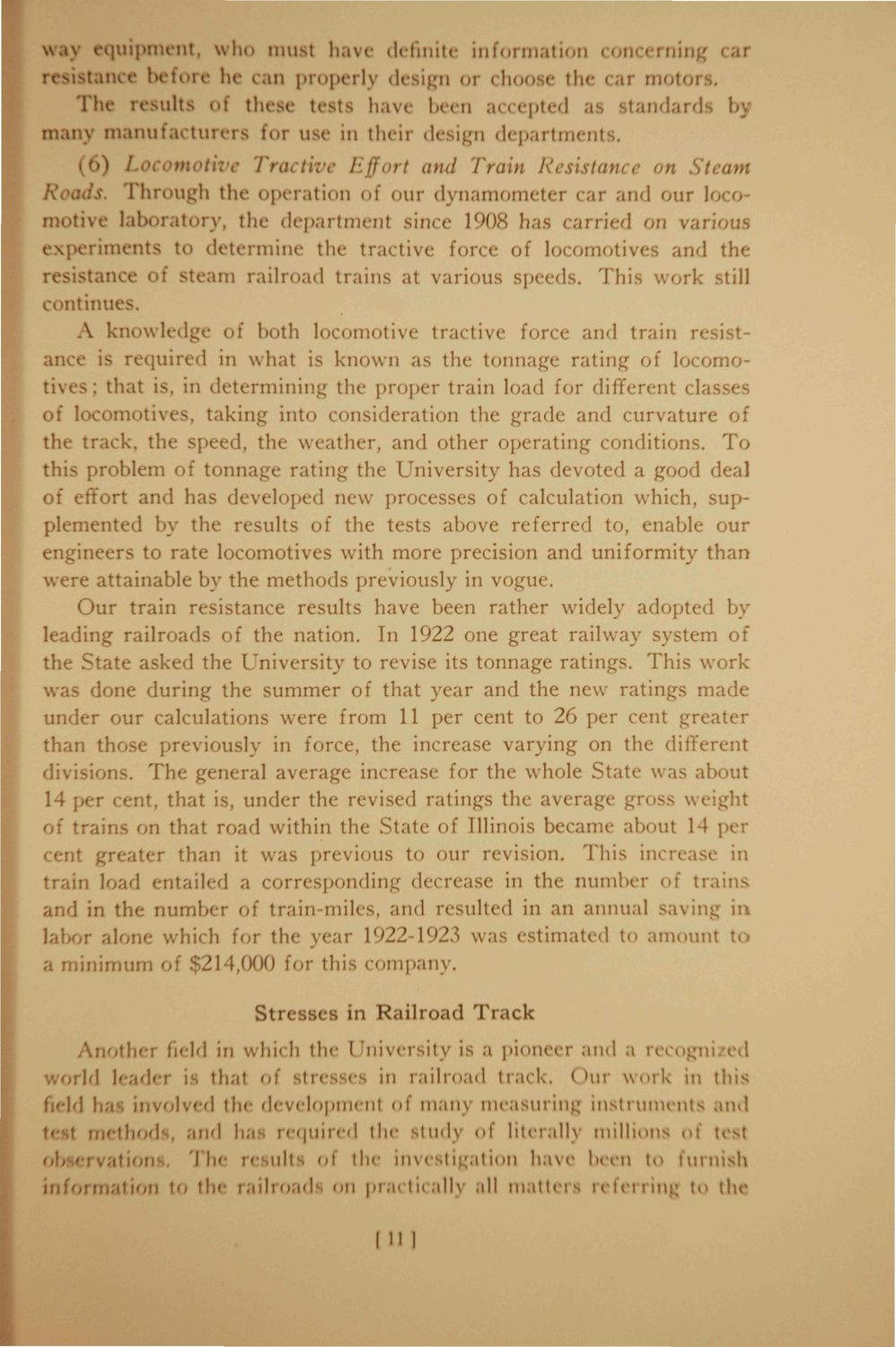Caption: Booklet - One Hundred Million (Impact of UI) (1931)
This is a reduced-resolution page image for fast online browsing.

EXTRACTED TEXT FROM PAGE:
w equipment, wl must have definite in >rmation con< ning i resistan he- m properly design or cho< • the car mot< .. The i tilts of these tests have I n a epted i and;: Is 1 < many manut t u r n s for ti in their d< ign departments. I Locomotive Tractive I " t and Train Res lance on n h • rhrough the operation of our dynamometer car and our loco( motive laboratory, the department since 1 >08 has irried on iri experiments t letermine the tractiv< force of locomotives and tl < resistance of steam railroad trains at various sp< ds. This v >rk still continue A knowledge of both locomotive tractive force and train n tance is r |aired in what is known as the tonnage rating of locomotives ; that is, in determining the proper train load for difl nt clot loc motives, taking into consideration the grade and curvature of the track, the speed, the weather, and other operating conditions. To this problem of tonnage rating the University has devoted a good deal of effort and has developed new processes of calculation which, supplemented by the results of the tests above referr* I to, enable our engineers to rate locomotives with more precision and uniformity than were attainable by the methods previously in vogue. Our train resistance results have been rather widely adopt 1 by h ding railroads of the nation. In 1922 one great railway system of the te asked the University to revise its tonnage ratings. This workwas done during the summer of that year and the new ratings made under ur ( lculations were from 11 per cent to 26 per cent greater than th previously in force, the increase varying on the different divisions. The general a\ rage increase for the whole State was ab it 14 per cent, that is, under the revi d ratings the average- gross w< ;ht O*' trains on that road within the State of Illinois became about 14 per cent gr than it w previous to our revision. This increase in rain 1 id entailed a ^responding decrease in the number of train nd in the numl • r of train miles, and resulted in an annual savin- in labor ne which for the y ir 1922-1923 was - timated t» imount a minimum o £214,000 for this i ompany. Sti ;ses in Railroad T r a c k Anoth< field in which the University is a pion< r and a i >trni I leader . that of stresses in railroad track. Cm work in this field has inv< 'I tht development of manv measuring instruments and teat metliod and has required the study of literal!)' millions of test < rvatioi. 'Mi' p ult'. of tbe inv< ution have been to furnish ;ifor mat ion to th< railro on practical!) all matters reft t rm^ to the I ii
|